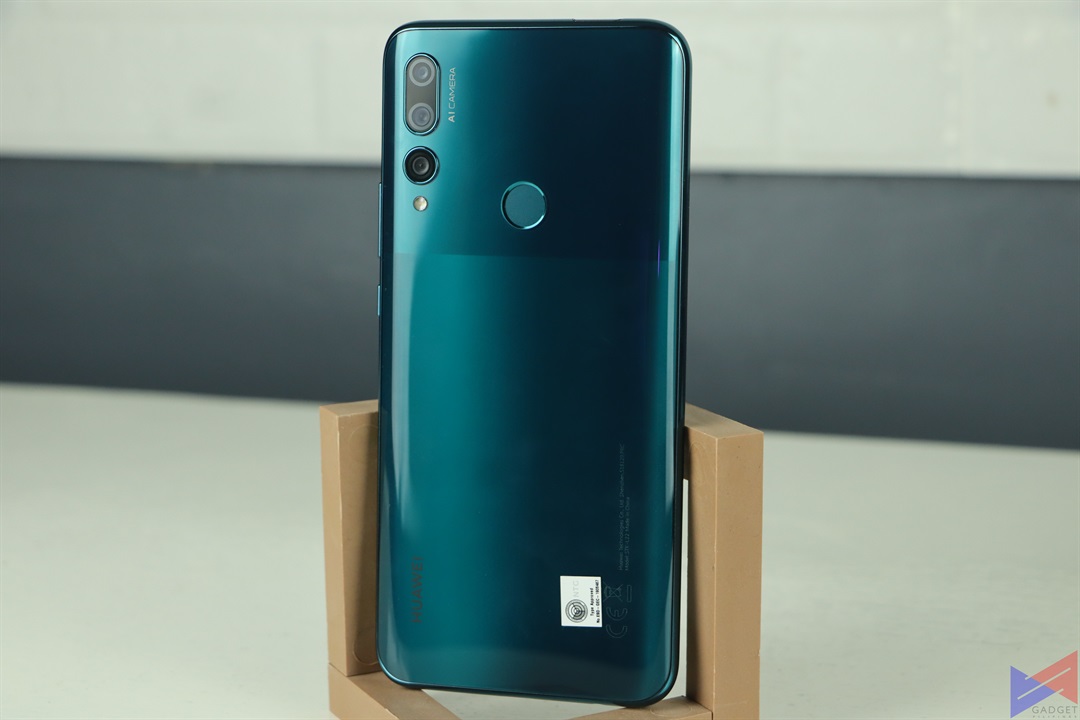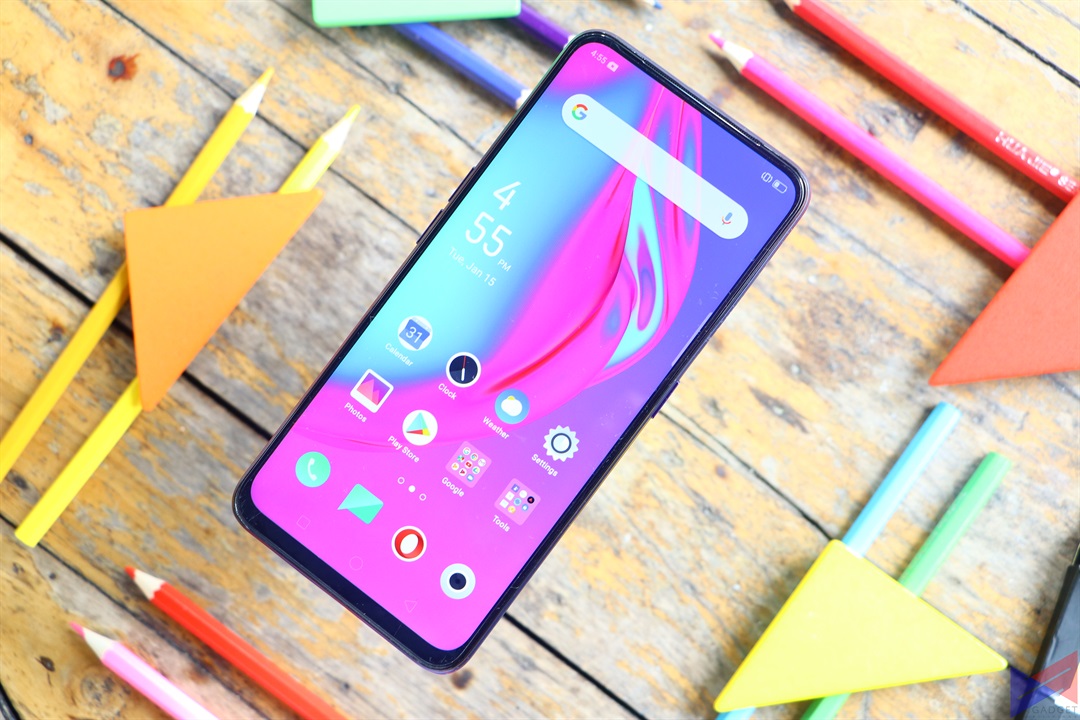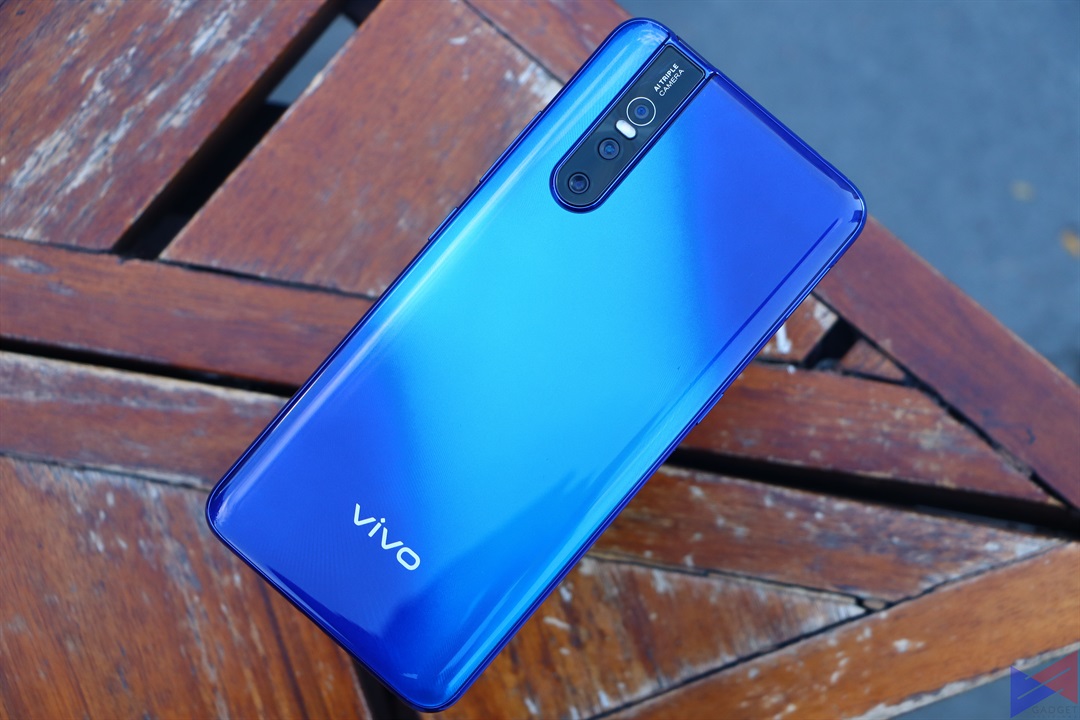If you have been checking out the trends in the smartphone industry especially in the midrange segment, you would agree with me that there has been a plethora of devices with popup camera. Most of the brands we know jumped into this trend, and we can feel that this is going to stay in the midrange segment for many years to come.
3 of the devices that are under our radar are the Huawei Y9 Prime, OPPO F11 Pro and VIVO V15. Each has its own distinctive strengths, which deserve a separate article: Huawei Y9 Prime has impressive popup camera mechanism, OPPO F11 Pro has spectacular camera performance, and VIVO V15 has surprisingly good gaming performance.

Huawei Y9 Prime

OPPO F11 Pro

VIVO V15
To put its strengths into proper perspective, I have prepared a comparison table below.
| Huawei Y9 Prime | OPPO F11 Pro | VIVO V15 | |
| Announced | May 2019 | March 2019 | March 2019 |
| Dimensions | 6.44 x 3.04 x 0.35 in | 6.35 x 3.00 x 0.35 in | 6.35 x 2.99 x 0.33 in |
| Weight | 196.8 g | 190 g | 189.5 g |
| Display Type | LTPS IPS LCD capacitive touchscreen, 16M colors | LTPS IPS LCD capacitive touchscreen, 16M colors | LTPS IPS LCD capacitive touchscreen, 16M colors |
| Screen Size | 6.59 inches (91% screen-to-body ratio) | 6.53 inches (84.4% screen-to-body ratio) | 6.53 inches (85.6% screen-to-body ratio) |
| Resolution | 1080 x 2340 pixels, 19.5:9 ratio (~391 ppi density) | 1080 x 2340 pixels, 19.5:9 ratio (~397 ppi density) | 1080 x 2340 pixels, 19.5:9 ratio (~395 ppi density) |
| OS | Android 9.0 (Pie); EMUI 9 | Android 9.0 (Pie); ColorOS 6 | Android 9.0 (Pie); Funtouch 9 |
| Chipset | Hisilicon Kirin 710F (12 nm) | Mediatek Helio P70 (12nm) | Mediatek Helio P70 (12nm) |
| CPU | Octa-core (4×2.2 GHz Cortex-A73 & 4×1.7 GHz Cortex-A53) | Octa-core (4×2.1 GHz Cortex-A73 & 4×2.0 GHz Cortex-A53) | Octa-core (4×2.1 GHz Cortex-A73 & 4×2.0 GHz Cortex-A53) |
| GPU | Mali-G51 MP4 | Mali-G72 MP3 | Mali-G72 MP3 |
| Internal Storage | 128 GB | 64/128 GB | 64/128 GB |
| RAM | 4 GB RAM | 4 GB RAM | 6 GB RAM |
| Main Camera | 16 MP, f/1.8, (wide), PDAF | 48 MP, f/1.8, (wide), 1/2.0″, 0.8µm, PDAF | 24 MP, f/1.8, 1/2.8″, 1.12µm, Dual Pixel PDAF |
| 8 MP (ultrawide) | 5 MP, f/2.4, 1/5″, 1.12µm, depth sensor | 8 MP, f/2.2, 13mm (ultrawide) | |
| 2 MP, f/2.4, depth sensor | 5 MP, f/2.4, depth sensor | ||
| Secondary Camera | Motorized pop-up 16 MP, f/2.0 | Motorized pop-up 16 MP, f/2.0, 1/3.1″, 1.0µm | Motorized pop-up 32 MP, f/2.0, 0.8µm |
| Battery | Non-removable Li-Po 4000 mAh battery | Non-removable Li-Po 4000 mAh battery | Non-removable Li-Po 4000 mAh battery |
| Price | 12990 | 18990 | 15999 |
Having a popup selfie camera, being the focus of this article, is a big deal in the industry nowadays. Not only that it strikes a futuristic vibe in it, but it’s also a very ingenious way to increase the device’s screen real estate.
We got a fair share of checking out these devices and have seen Huawei Y9 Prime’s dominance in screen real estate and popup selfie mechanism departments. For starters, Y9 Prime has the biggest screen real estate and has the widest coverage in terms of screen-to-body ratio among all the devices. This means that mobile gamers have wider field of view when playing games and consumers have bigger screen to look at when watching their favorite film or TV series.
This advantage of Huawei Y9 Prime is just a tip of the iceberg. Let us zoom back to how this smartphone got its wider screen in the first place – its popup selfie camera. While the performance of its popup camera is something that we will cover in our full review, we find it interesting to focus our attention to how durable it is.
One of our major concerns when brands started rolling out smartphones with moving parts was durability. Time and again, brands have been conscious about this seemingly universal concern, and have reported that they have laid out state of the art procedures of testing the technology.
Huawei, being one of the brands that introduced smartphones with popup cameras, have reported that it passed through Huawei’s strict and thorough durability tests. Prior to the introduction of Huawei Y9 Prime, I got the chance to visit Huawei’s Device Reliability Lab in Shanghai and had the chance to see the science behind their lab tests. You can check out my vlog below.
Huawei Y9 Prime was subjected into 1mm drop test, 8-hour dirt test, 2,000 soft pressure tests, -20 °C to 60 °C temperature life test, button test, 0.5 roller test, and telescopic endurance test. They also added that their laboratory results revealed that the Huaweio Y9 Prime’s popup camera is built to raise and retract 100,000 times, or roughly around 2.7 years. It can also withstand up to 15kg of soft pressing force on the front of the phone. That’s like putting a 13 stacks of Huawei Matebook 13-inch on its popup selfie camera.
Retailing for PhP12,990, Huawei Y9 Prime is a mid-range smartphone that’s packed with laudable features that make it truly stand out from the competition. The bigger display with insane wider screen-to-body ratio headlines as major advantage over OPPO F11 Pro and VIVO V15. More over, the quality that Huawei guarantees, based on their lab tests, obviously make it a competitive choice among the rest. These features, however, are barely scratching the surface of what it can fully offer to the consumer compared to its competitors. We cannot wait to publish our full review of Huawei Y9 Prime soon.
Gianfranco is the co-founder of gadgetpilipinas.net. He graduated from Far Eastern University. A Psychology student turned tech-savvy. He's currently the HR Supervisor of Blip Media and one of the content producers of Gadget Pilipinas. He enjoys playing competitive video games and binge-watch American TV series.




